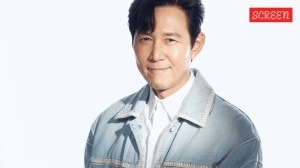Scientists develop early sperm cells from stem cells
Scientists said on Monday that they had developed from embryonic stem cells in the laboratory, early forms of cells that go on to form human...

Scientists said on Monday that they had developed from embryonic stem cells in the laboratory, early forms of cells that go on to form human sperm and eggs. The achievement, to be announced at a meeting of fertility experts, could pave the way for new treatments for infertile couples and therapeutic cloning which could cure a range of diseases. ‘‘We’ve shown we can generate primordial germ cells. These are cells that go on to form either the sperm or the egg depending on the gender of the individual,’’ said Professor Harry Moore, a reproductive biologist at the University of Sheffield in England. ‘‘In culture, we’ve been able to show, using human embryonic stem cells, that some of those cells develop further to a later stage of sperm development.” Once the technique is perfected and if proven safe—which Moore emphasised is a big ‘‘if’’—it may be possible to treat people who do not produce their own sperm and eggs. If human eggs could be created from embryonic stem cells, it would also circumvent the need for donated eggs for therapeutic cloning. —Reuters
Friends help longevity, finds Australian study
ADELAIDE: Having a broad network of good friends increases the likelihood that older people will live longer. Having close family ties does not. A 10-year study by Flinders University in Australia, that monitored personal and telephone contacts of 1,500 people has found that the survival effect was greatest for people with the broadest and deepest network of friends. —LAT-WP
Researchers grow blood vessels in tissue culture
DURHAM: A team led by Laura Niklason of the Departments of Anesthesia, Surgery and Biomedical Engineering at Duke University has grown human blood vessels. The main constituents of blood vessels—smooth-muscle cells and endothelial cells—both can be extracted from veins and grown in tissue culture. However, cells taken from older people have a limited capacity to divide. Niklason and her colleagues addressed this problem by stopping the erosion of telomeres, tail-like structures on the end of chromosomes that shorten with each cell division. The Duke team isolated the two types of cells and treated them with genes that stopped the telomeres from shortening. —LAT-WP







- 01
- 02
- 03
- 04
- 05
























